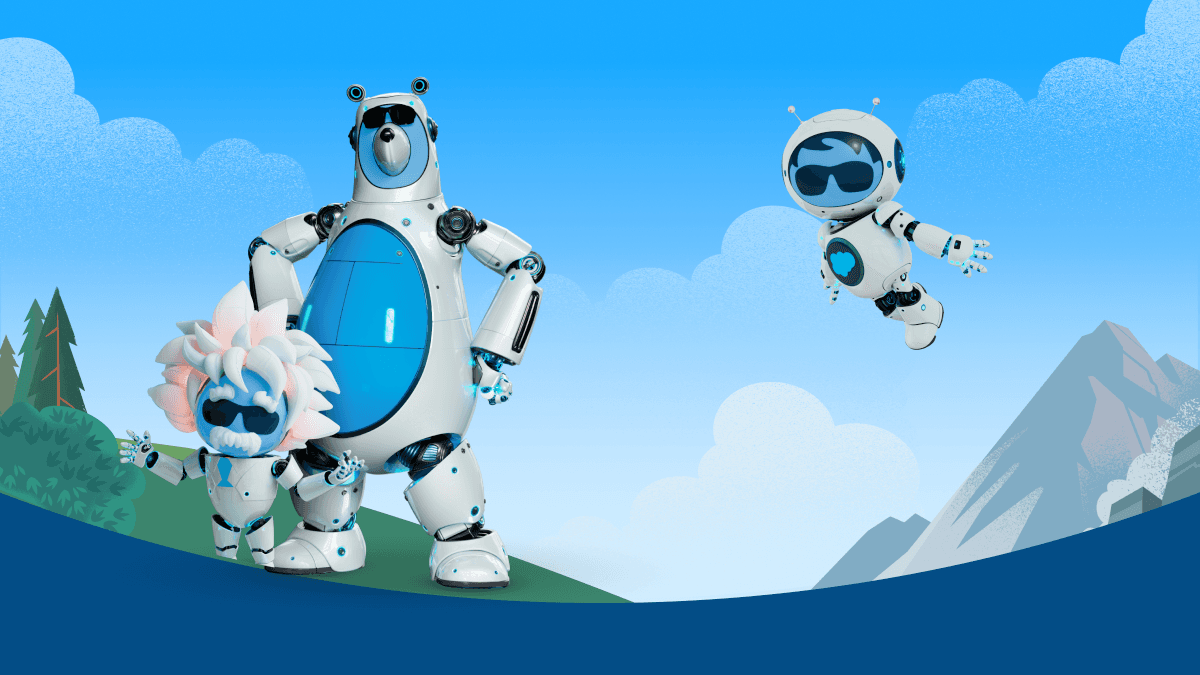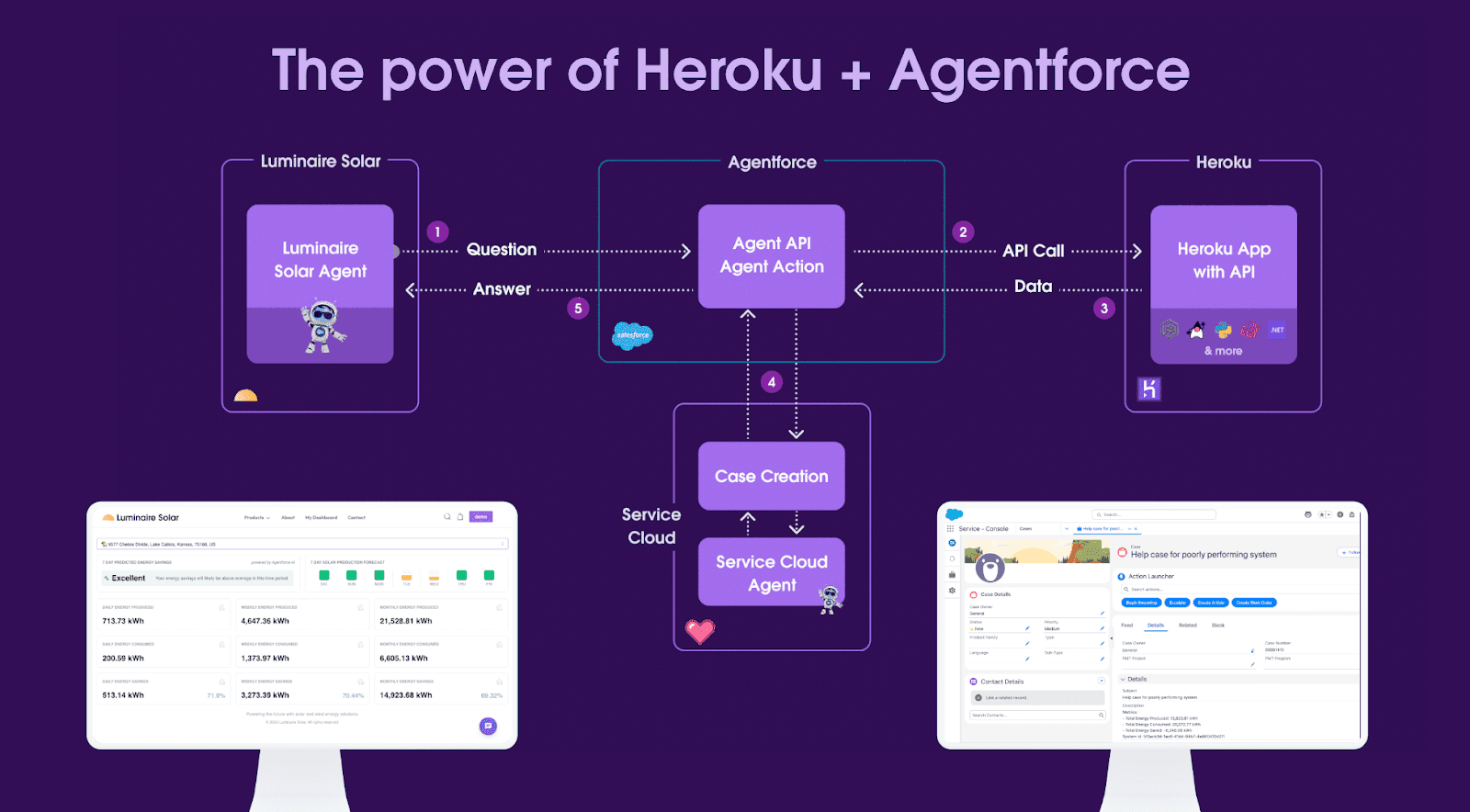Salesforce & Heroku

Over the past few months, I’ve had the opportunity to work on several exploratory projects using Salesforce and Heroku, focusing on frontend prototyping, API integration, and showcasing new capabilities of Salesforce’s emerging Agentforce solution. This post summarizes what I built, what I learned, and how these tools can work together to support both internal innovation and external integration.
newline
1. Building a Branded Frontend for Salesforce and Heroku
To kick off, I developed a base front-end application intended to represent a demo brand (for those familiar with Salesforce development, similar to that of "Coral Cloud Resort") that interfaces with both Salesforce and Heroku backends. The goal was to create a lightweight, flexible foundation for future integrations and demonstrations.
The frontend was designed with:
- A React-based interface
- A modular architecture to easily plug in future Salesforce or third-party components
- Basic theming to simulate client branding scenarios
This provided a versatile demo environment to test integrations without committing to real customer branding or production constraints.
newline
2. Showcasing Agentforce in React Applications
The second project involved working with Agentforce, Salesforce’s latest agent-focused solution. The goal was to showcase how Agentforce can be embedded directly into React apps—something especially valuable for clients looking to integrate customer service tools into their own custom UIs.
Key highlights:
- I built a React integration that embedded the Agentforce and allowed dynamic behavior based on app state.
- Demonstrated how Agentforce could work outside of the traditional Salesforce ecosystem, enabling more flexible UX strategies.
- Developed mock scenarios to simulate conversations, agent handoffs, and contextual data pulls.
newline
3. Demonstrating Agentforce + Heroku for External API Access
Finally, I explored how Agentforce could interact with APIs hosted outside of Salesforce, deployed on Heroku. This project focused on extending the capabilities of Agentforce AI by exploring both standard and non-traditional integration patterns across the frontend, Salesforce, and external backends. Specifically, I built a full-stack flow that demonstrated:
- Interactive Agentforce AI integration not just in conventional contexts like live chat or bot interfaces, but also in non-traditional entry points such as dashboards and other in-app user actions.
- A frontend-aware integration, where Agentforce could adapt its responses based on the current page context or user behavior, enabling a more intelligent and dynamic experience.
- A secure, authenticated user flow that allowed the Salesforce platform to recognize the user and personalize interactions accordingly.
- Agentforce flows that called external APIs hosted on Heroku to retrieve user-specific data not stored within Salesforce—proving that Agentforce can go beyond the boundaries of the CRM to access external systems.
- Real-time injection of API responses into the Agentforce interface, such as chat messages or sidebar content, enhancing the interactivity and relevance of the agent's response.
This POC highlighted how Agentforce can act as a truly extensible platform—blending Salesforce-native intelligence with external data sources and custom UI logic.

Heroku + Agentforce flow
Final Thoughts
These projects were a great opportunity for me to explore the intersection of product prototyping, platform integration, and developer experience. Working with Salesforce and Heroku gave me the chance to build across both frontend and backend stacks, while experimenting with emerging tech like Agentforce challenged me to think creatively about customer support tooling in modern web apps.
